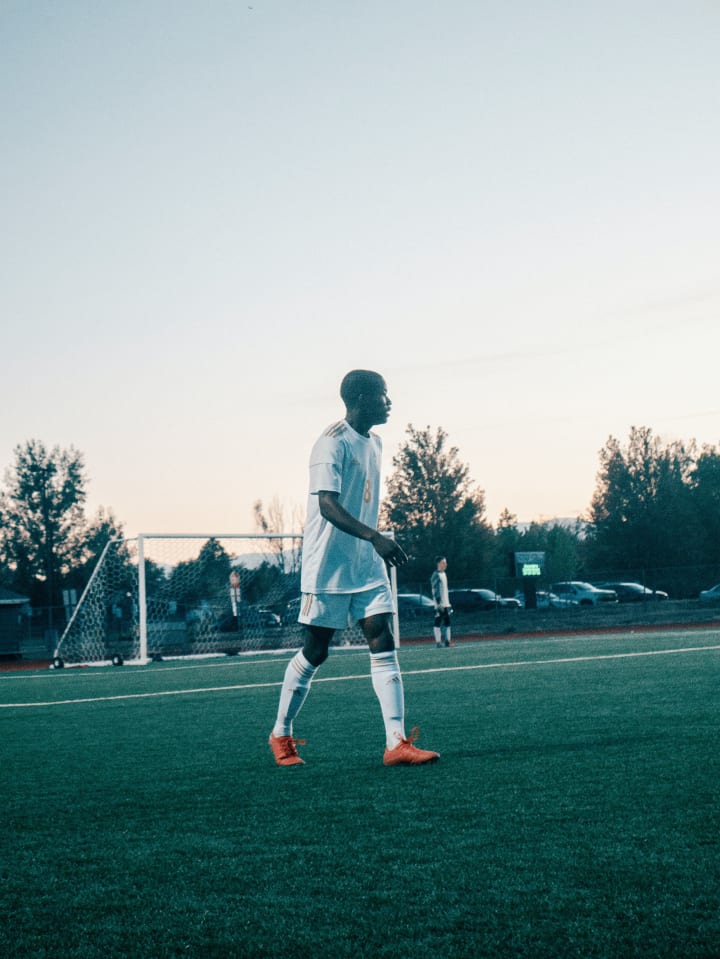Position-Specific Training Methods in Football
Unveiling the Unique Physical and Technical Demands for Each Position

Football is a dynamic sport that requires players to possess a wide range of physical abilities and tactical skills. Different positions within the game demand specific physical attributes, technical expertise, and strategic understanding. As a result, training methods vary depending on the position played in football. This essay aims to explore the differences in training methods for various positions, highlighting the specific physical demands and skill sets required.
Goalkeepers:
Goalkeepers play a unique role in football, requiring exceptional agility, reflexes, and spatial awareness. Training methods for goalkeepers often focus on improving reaction time, explosive power, and flexibility. Specific exercises such as plyometrics, reaction drills, and diving practices are commonly employed. Additionally, goalkeepers require specialized training to enhance their handling, distribution, and positioning skills. Technical drills such as shot-stopping, one-on-one situations, and distribution exercises form an integral part of their training regimen.
Defenders:
Defenders are responsible for maintaining the defensive line and thwarting the opponent's attacks. They require strength, speed, agility, and good anticipation. Training methods for defenders typically include strength and conditioning exercises to improve muscular power and endurance. Emphasis is placed on developing speed and agility through sprinting drills, change of direction exercises, and ladder drills. Defenders also work on tackling techniques, aerial duels, and positioning drills to enhance their defensive capabilities.
Midfielders:
Midfielders serve as the link between the defense and the attack, requiring a combination of physical endurance, technical proficiency, and tactical awareness. Their training methods often involve a balance between aerobic and anaerobic conditioning to withstand the demands of running for extended periods while also engaging in quick bursts of speed and agility. Endurance runs, interval training, and high-intensity interval training (HIIT) are commonly used to enhance their stamina. Technical drills such as passing accuracy, ball control, and vision exercises are vital for midfielders to maintain possession and create scoring opportunities.
Forwards:
Forwards are responsible for scoring goals and need to possess explosive speed, agility, and precision in front of the goal. Their training methods focus on enhancing speed through sprint training, acceleration drills, and explosive movements. Shooting drills, finishing techniques, and positional awareness exercises are crucial to their development as goal-scoring threats. Additionally, forwards work on their agility and ball control to outmaneuver defenders and create goal-scoring opportunities for themselves and their teammates.

Wingbacks:
Wingbacks are a hybrid position between defenders and midfielders, requiring a unique set of skills. They need to be defensively solid while also contributing to the team's attacking play. Training methods for wingbacks involve a combination of defensive drills, including one-on-one duels and tracking back exercises, to ensure they can effectively defend their flank. Additionally, they work on crossing accuracy, overlapping runs, and offensive positioning to support attacks and deliver quality crosses into the box.
Special attention should also be given to the mental aspects of training for each position in football. While physical attributes and technical skills are crucial, mental strength and resilience play a significant role in performance on the field. Goalkeepers need to maintain focus and composure under pressure, defenders must make split-second decisions to prevent scoring opportunities, midfielders require strong decision-making skills, and forwards need to be confident and decisive in front of the goal. Incorporating mental training techniques such as visualization, mindfulness exercises, and goal-setting can enhance the overall performance and effectiveness of players in their respective positions. By addressing the mental aspects alongside physical and technical training, players can optimize their potential and excel in their specific roles within the game of football.
Conclusion:
Football is a complex sport that demands different physical attributes and skill sets from players based on their positions. Training methods are tailored to address these specific requirements. Goalkeepers focus on reflexes, agility, and handling skills, while defenders emphasize strength, speed, and defensive techniques. Midfielders require endurance, technical proficiency, and tactical understanding, whereas forwards prioritize explosive speed, precision, and goal-scoring abilities. Wingbacks, with their hybrid role, train to excel in both defensive and offensive aspects. Understanding these differences in training methods according to position allows coaches and players to optimize their development and contribute effectively to their team's success on the football pitch.
About the Creator
Assoc. Prof. Başar Öztürk
I'm Assoc. Prof. Başar Öztürk. I have been working as a physiotherapist for 16 years in Turkey. I want to raise awareness of people with my articles about healthy life suggestions.






Comments
There are no comments for this story
Be the first to respond and start the conversation.